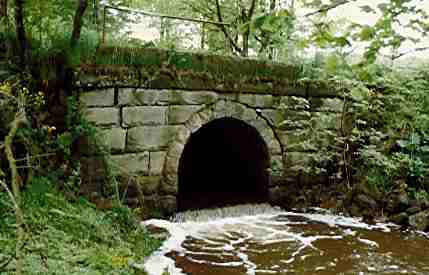Mercer County Engineer's Office
Historic Bridge 1608
|
|||

|
|||
Mercer County Bridge No. 1608 was a structure eligible for the National Register of Historic Places. An Historic Bridge Recordation document was prepared before replacement of this structure. Mercer County Bridge 1608 was located on Township Road 732, approximately one-mile northwest of the hamlet of Five Points, in Lake Township, Mercer County, Pennsylvania. The bridge was situated in a thinly settled rural area and spanned an unnamed tributary of Cool Spring Creek. Cartographic analysis of nineteenth-century maps suggests that the bridge may have been constructed prior to 1865, when settlement in the bridge vicinity consisted of small, thinly scattered farmsteads. Similar stone bridges existed in the area, including Mercer County Bridge 1211 in nearby Mill Creek Township The single-lane Mercer County Bridge 1608 consisted of a single span, semicircular arch stone structure built of uncoursed sandstone ashlars. The bridge had eight vertical stone courses and an overall length of 25 feet and a cartway width of 16.8 feet. Handrails fabricated from threaded iron pipe extended along the eastern and western bridge elevations. The bridge deck was covered with gravel and was situated approximately 3.3 feet above the crown of the arch, which had a span of 7.9 feet from springline to springline. The arch had a rise of approximately 4.7 feet, measured from the keystone to the impost and had a well-defined keystone. The intrados of the arch consisted of a random series of long and short uncoursed ashlars. The bridge rested atop a flat stone platform and the interior creekbed beneath the intrados was covered by a cement surface. Embedded in the impost of the northwest corner of the western bridge elevation were six tapered, heavy gauge iron rods. Although the function of these was unknown, they may have served as wedges to stabilize the arch. The uppermost stone course of the bridge was at grade. Mercer County Bridge 1608 was a good example of the arched stone bridge which was built over many of the region's smaller streams during the late eighteenth and early-to-mid nineteenth century. |